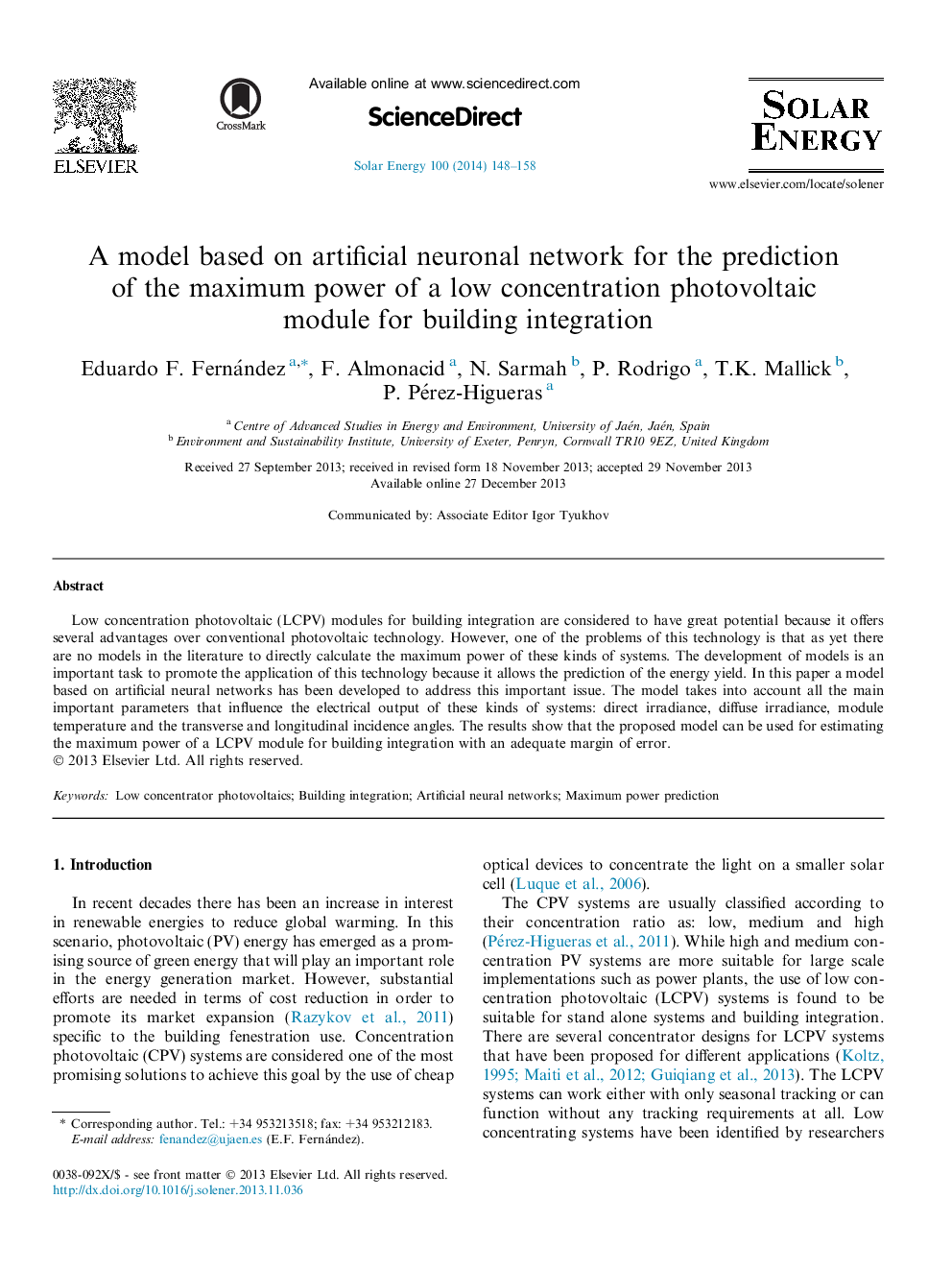| Article ID | Journal | Published Year | Pages | File Type |
|---|---|---|---|---|
| 1550115 | Solar Energy | 2014 | 11 Pages |
Abstract
Low concentration photovoltaic (LCPV) modules for building integration are considered to have great potential because it offers several advantages over conventional photovoltaic technology. However, one of the problems of this technology is that as yet there are no models in the literature to directly calculate the maximum power of these kinds of systems. The development of models is an important task to promote the application of this technology because it allows the prediction of the energy yield. In this paper a model based on artificial neural networks has been developed to address this important issue. The model takes into account all the main important parameters that influence the electrical output of these kinds of systems: direct irradiance, diffuse irradiance, module temperature and the transverse and longitudinal incidence angles. The results show that the proposed model can be used for estimating the maximum power of a LCPV module for building integration with an adequate margin of error.
Related Topics
Physical Sciences and Engineering
Energy
Renewable Energy, Sustainability and the Environment
Authors
Eduardo F. Fernández, F. Almonacid, N. Sarmah, P. Rodrigo, T.K. Mallick, P. Pérez-Higueras,
